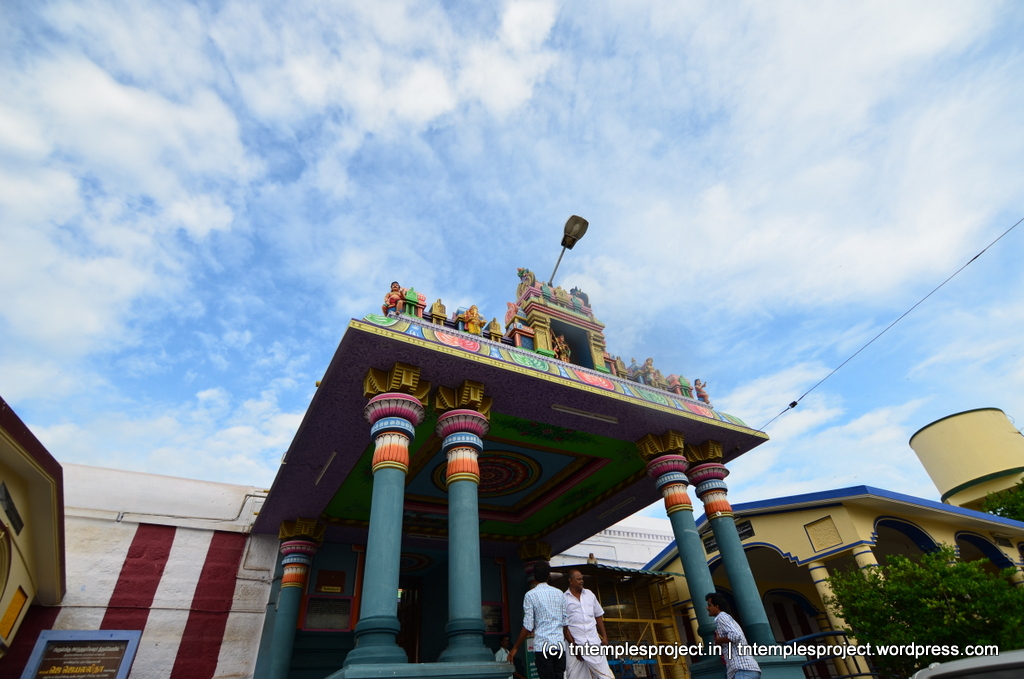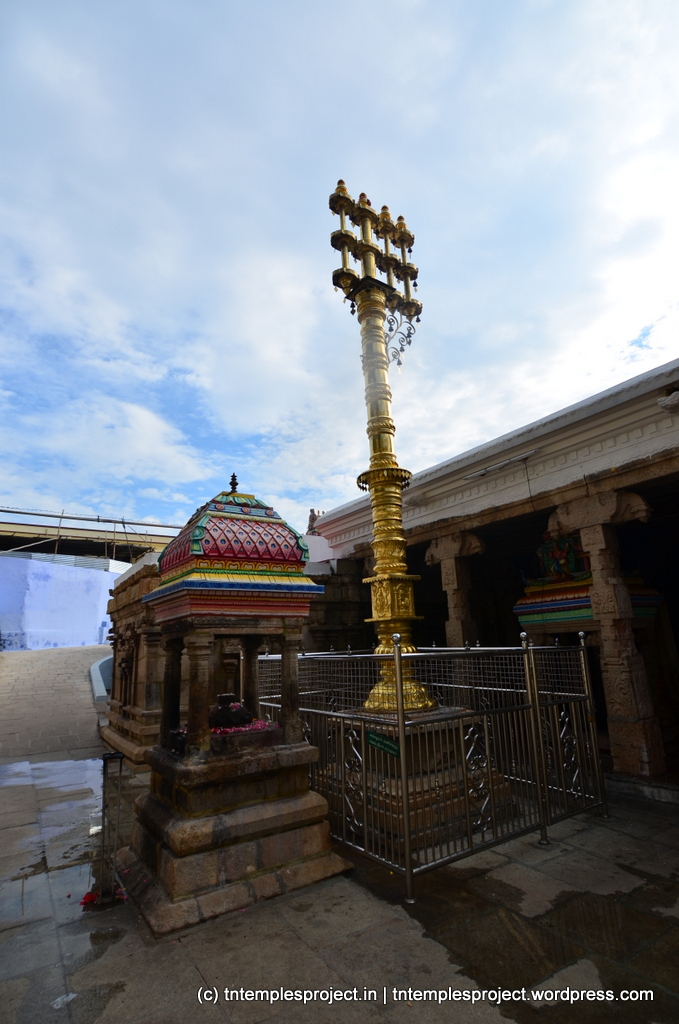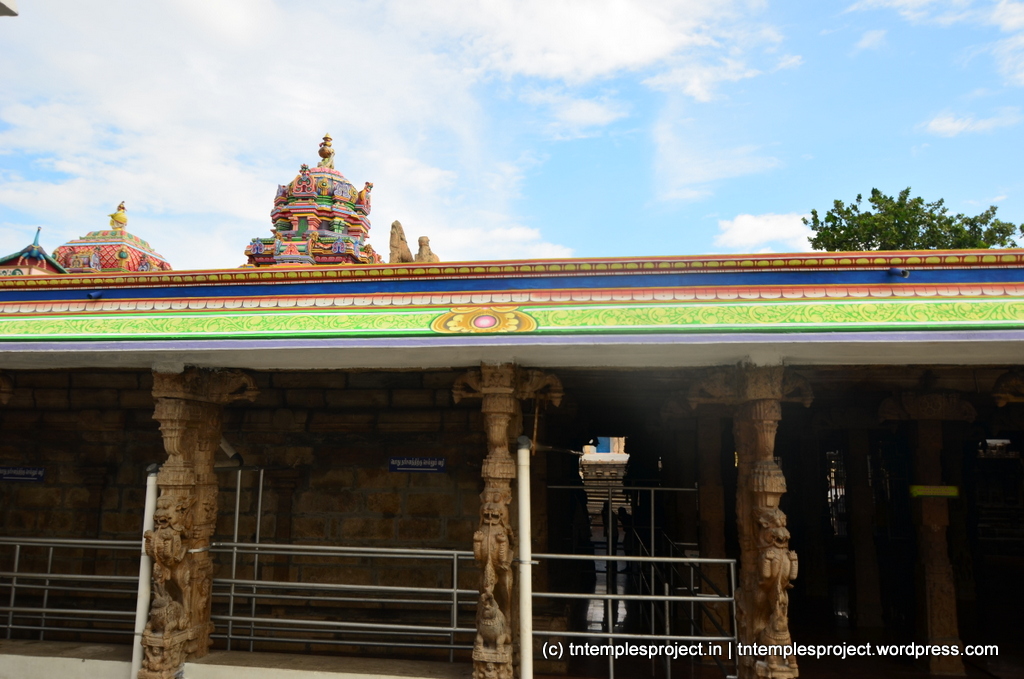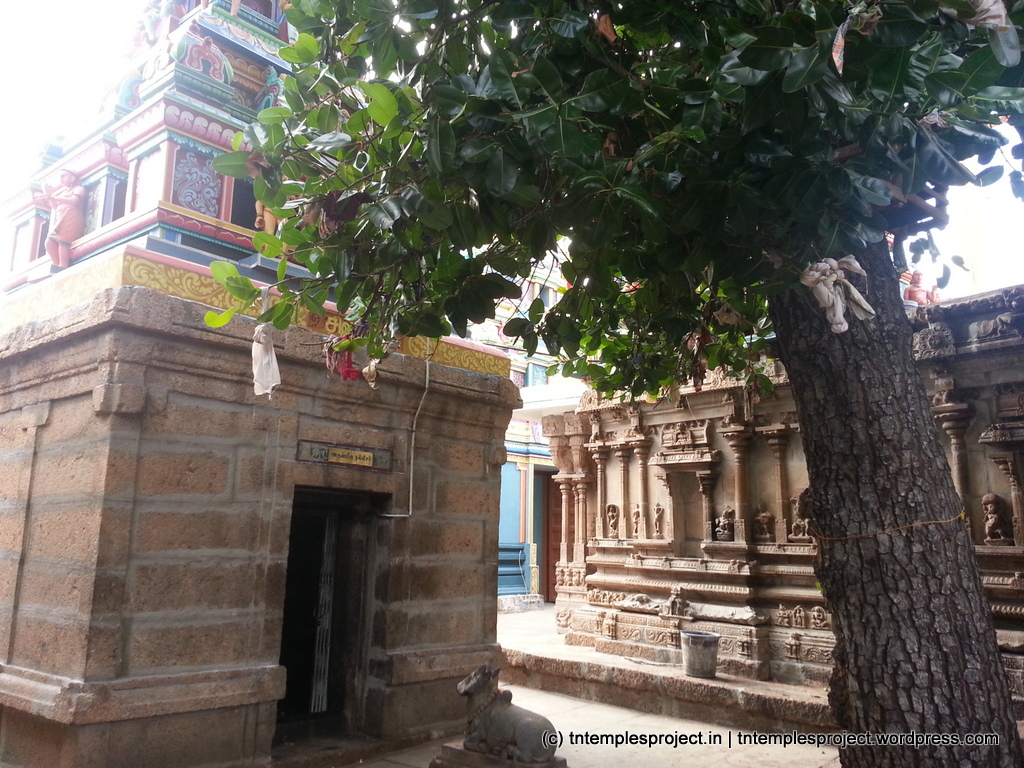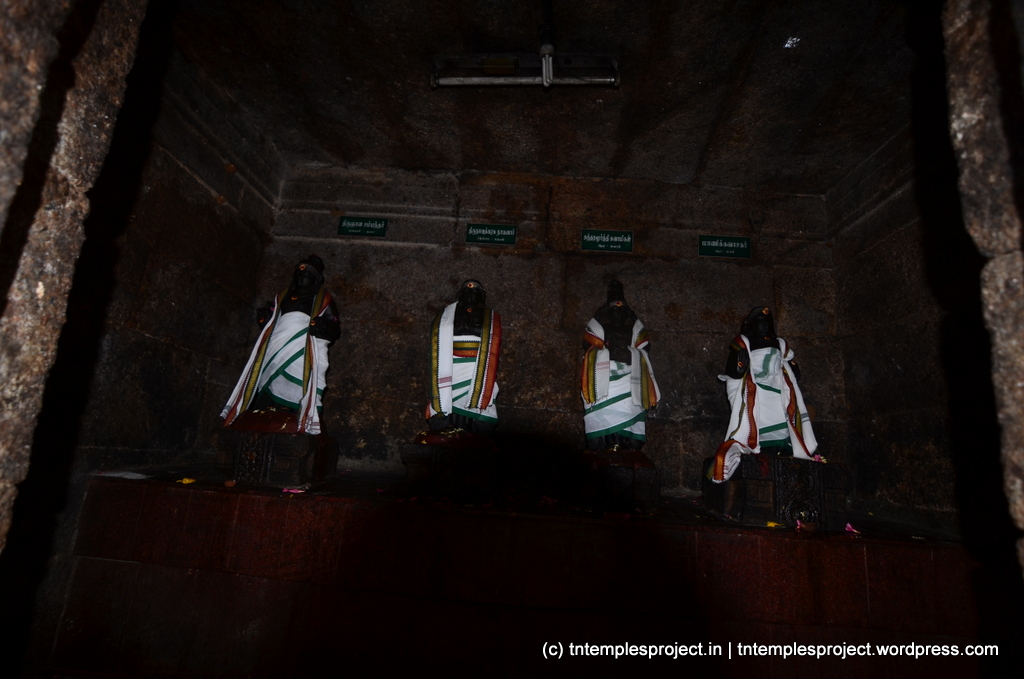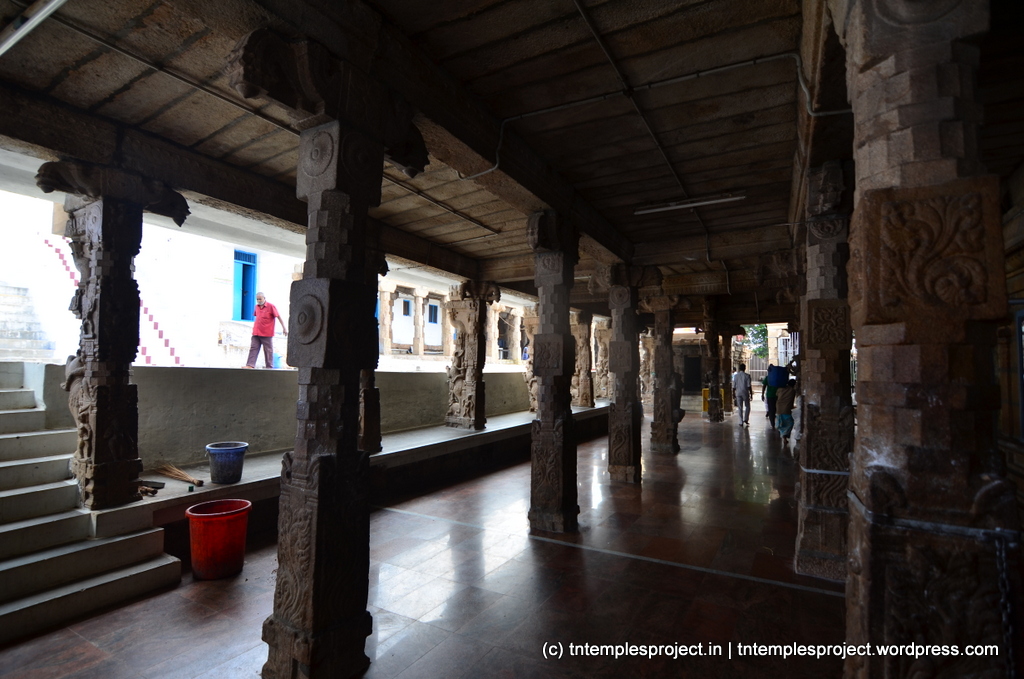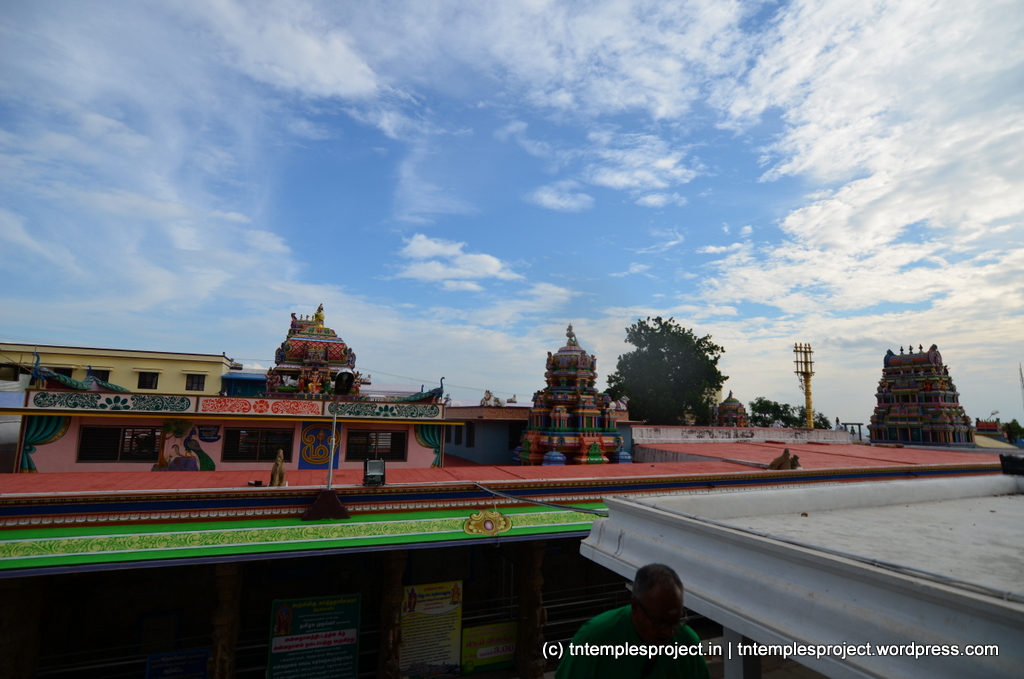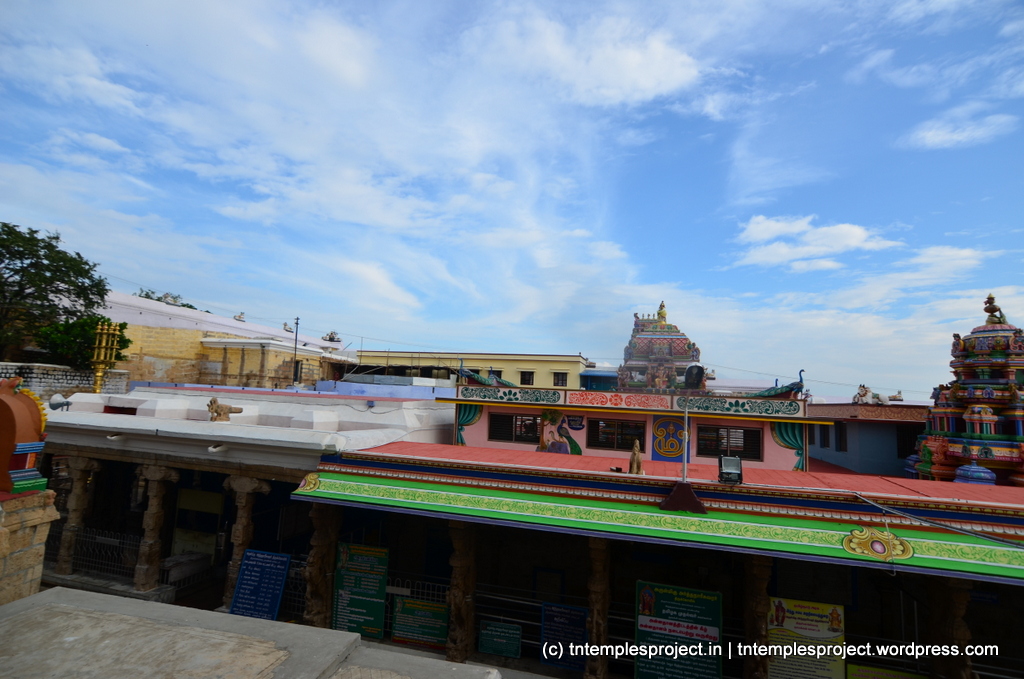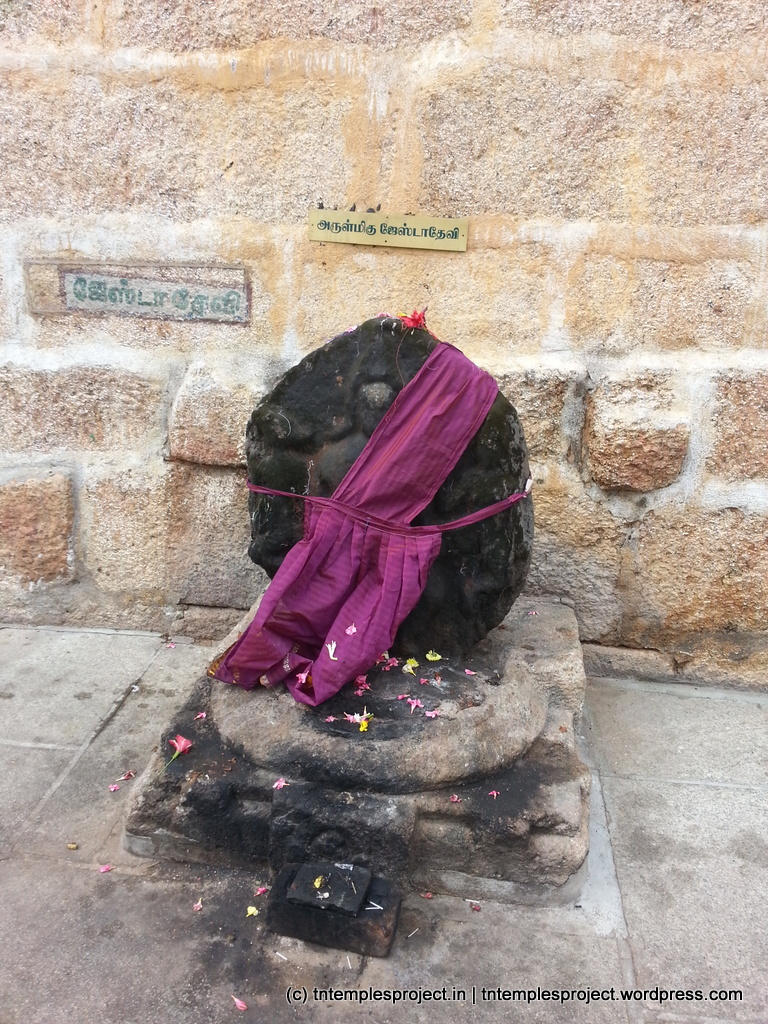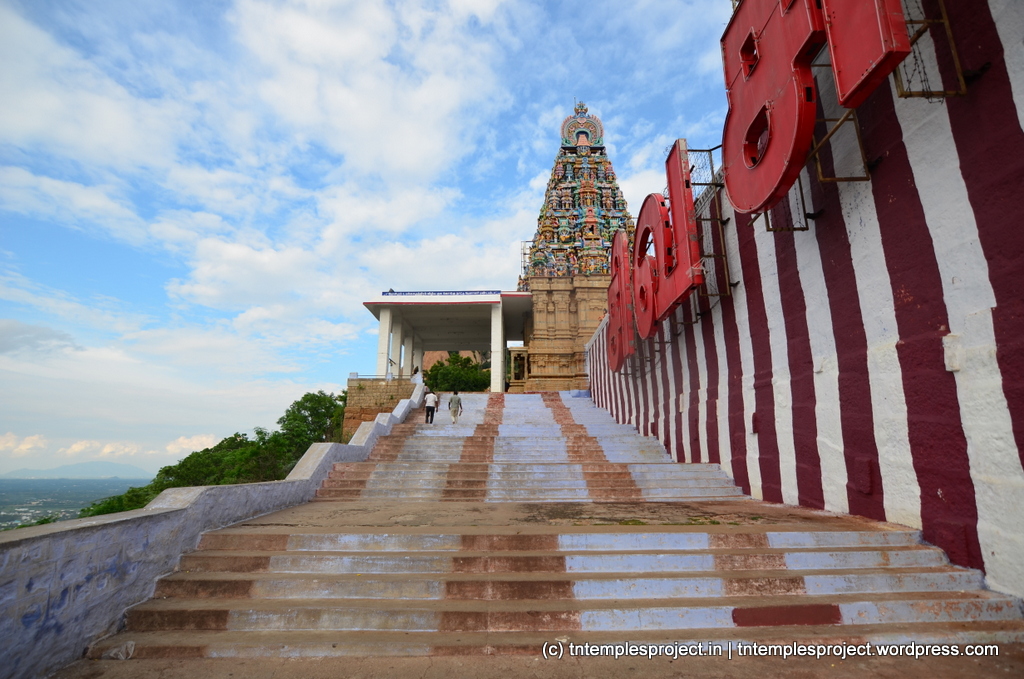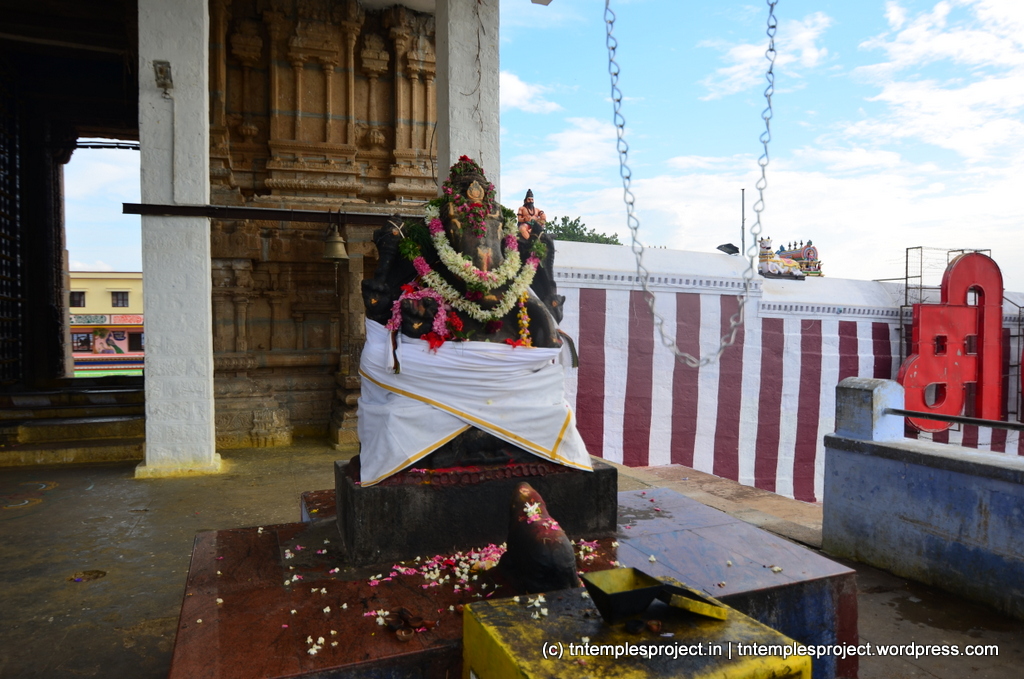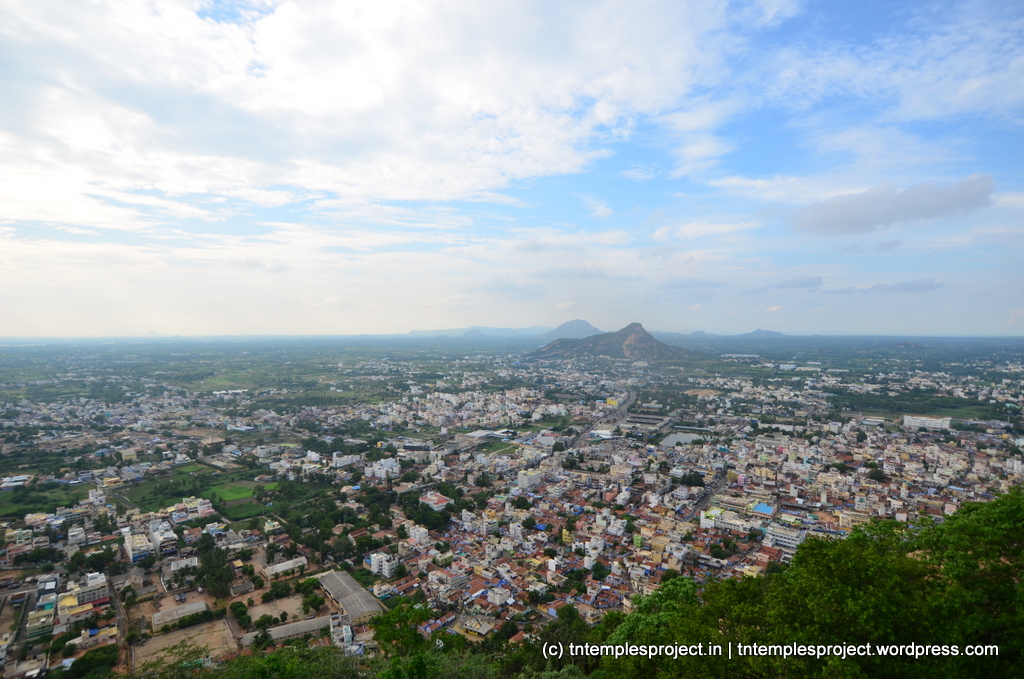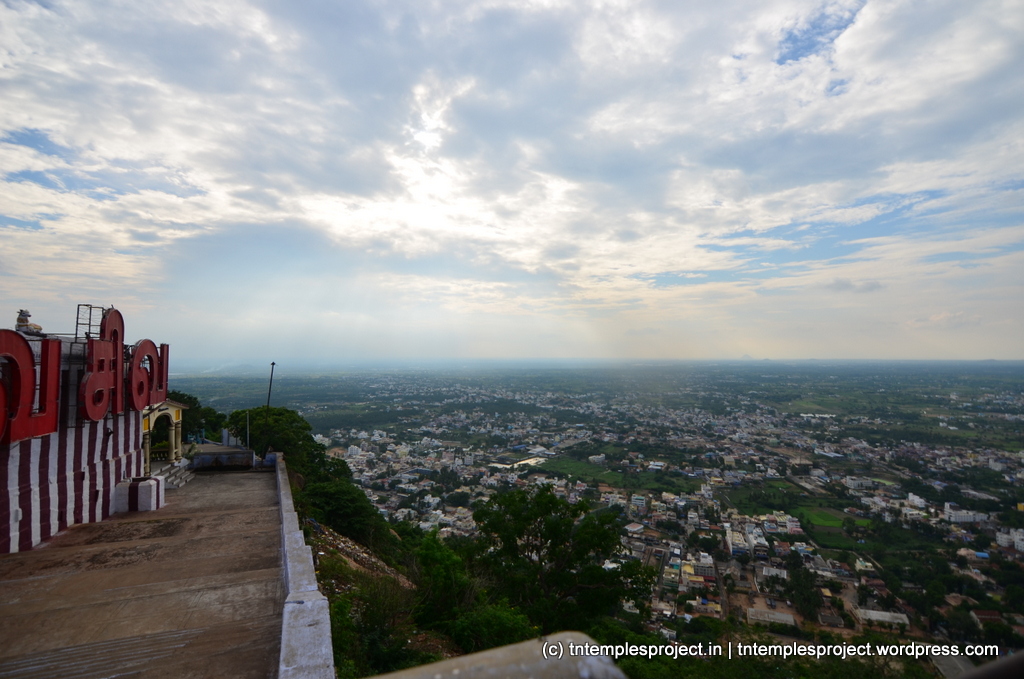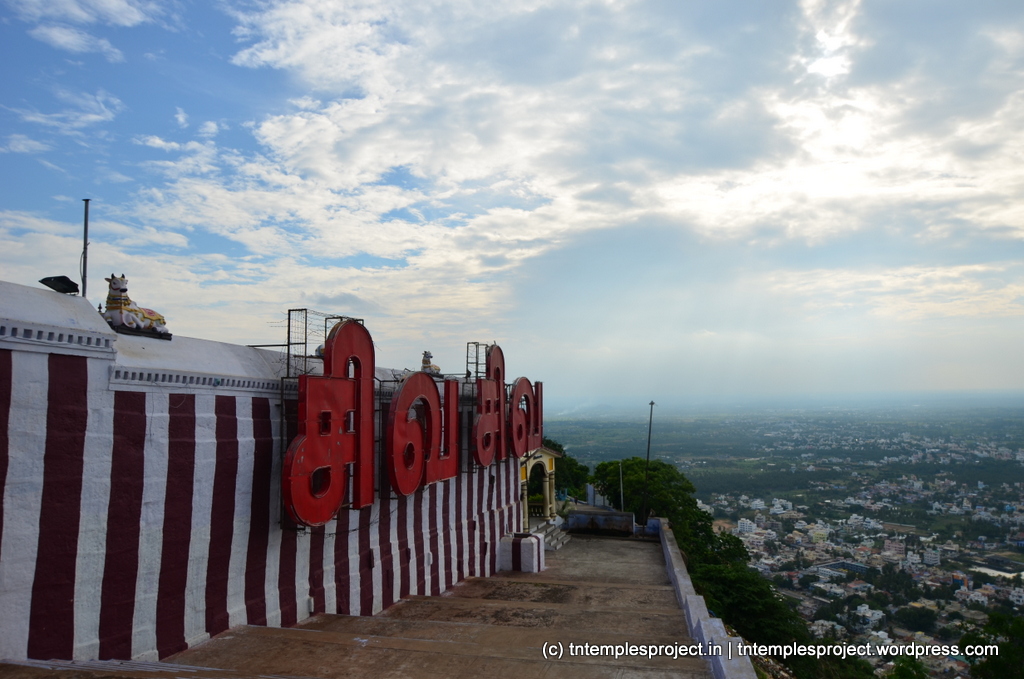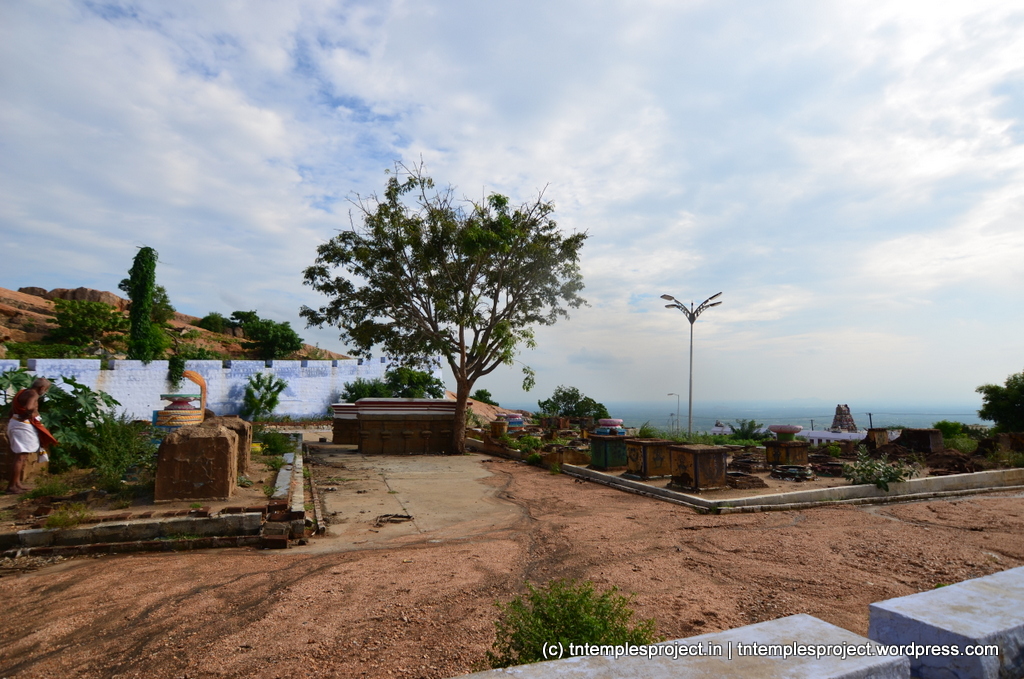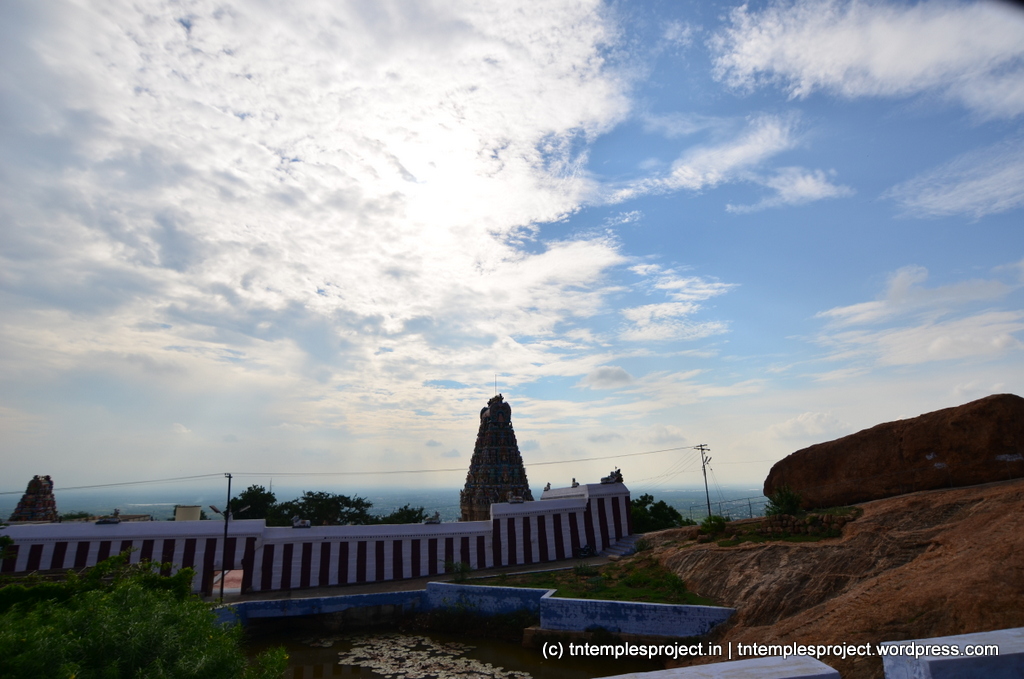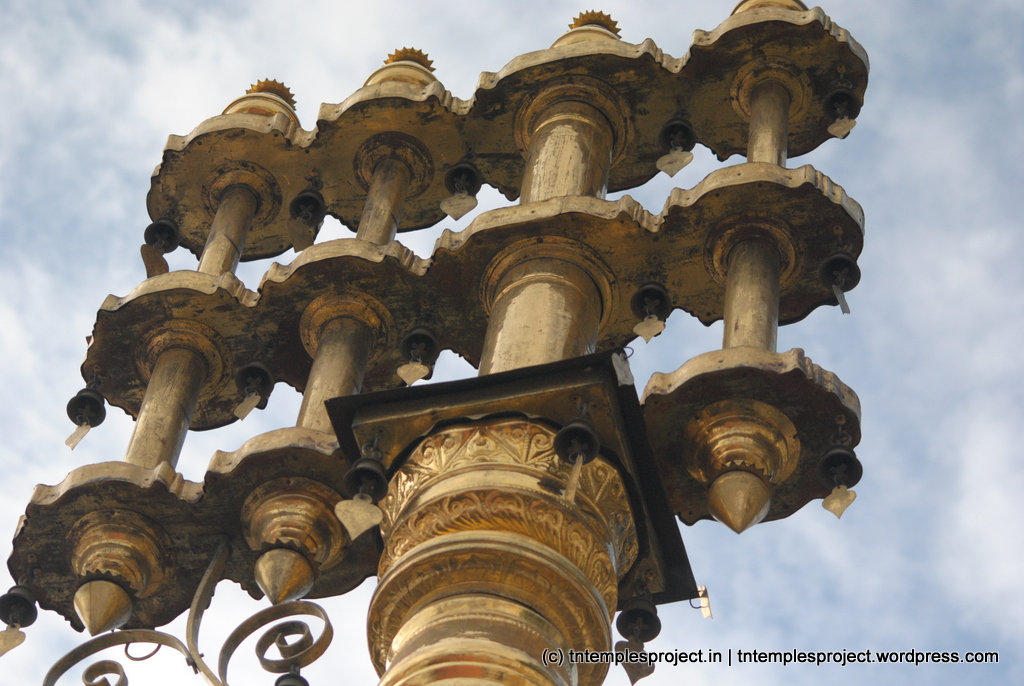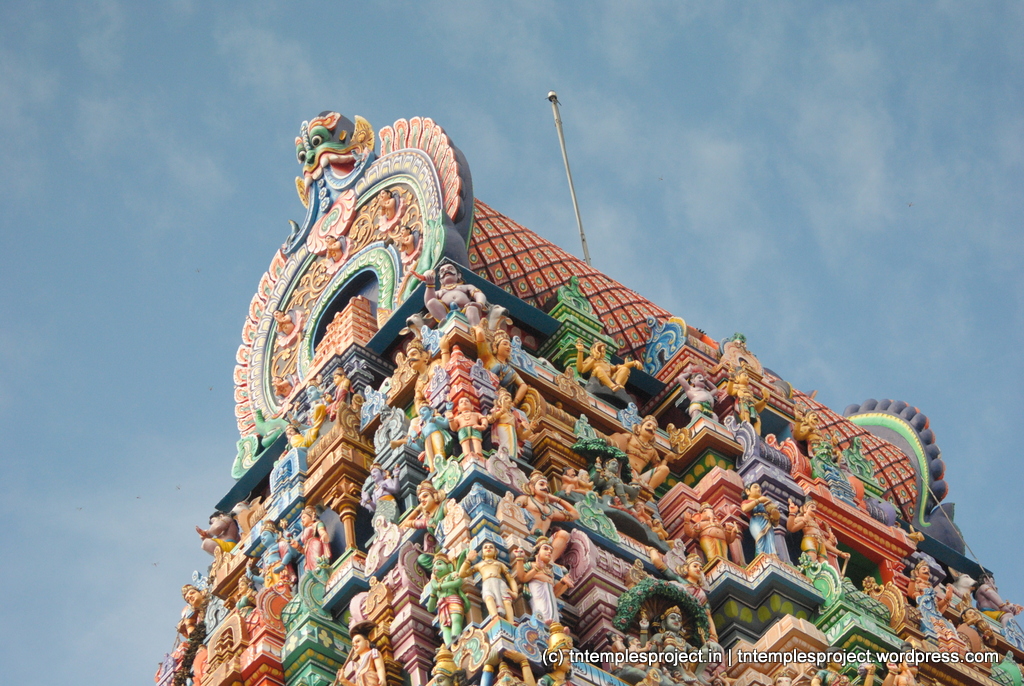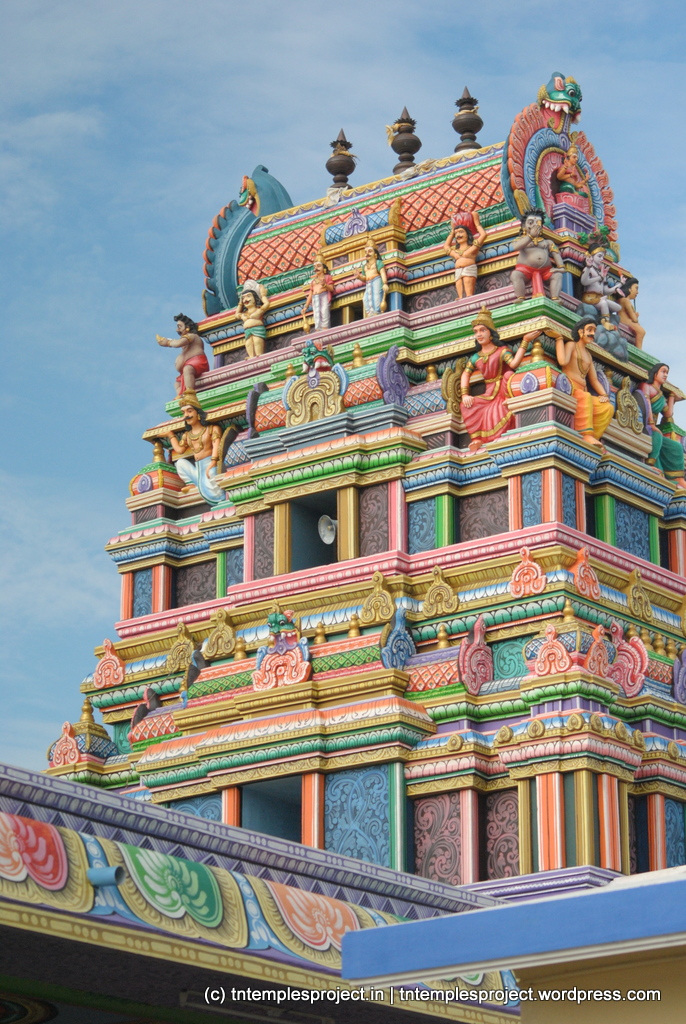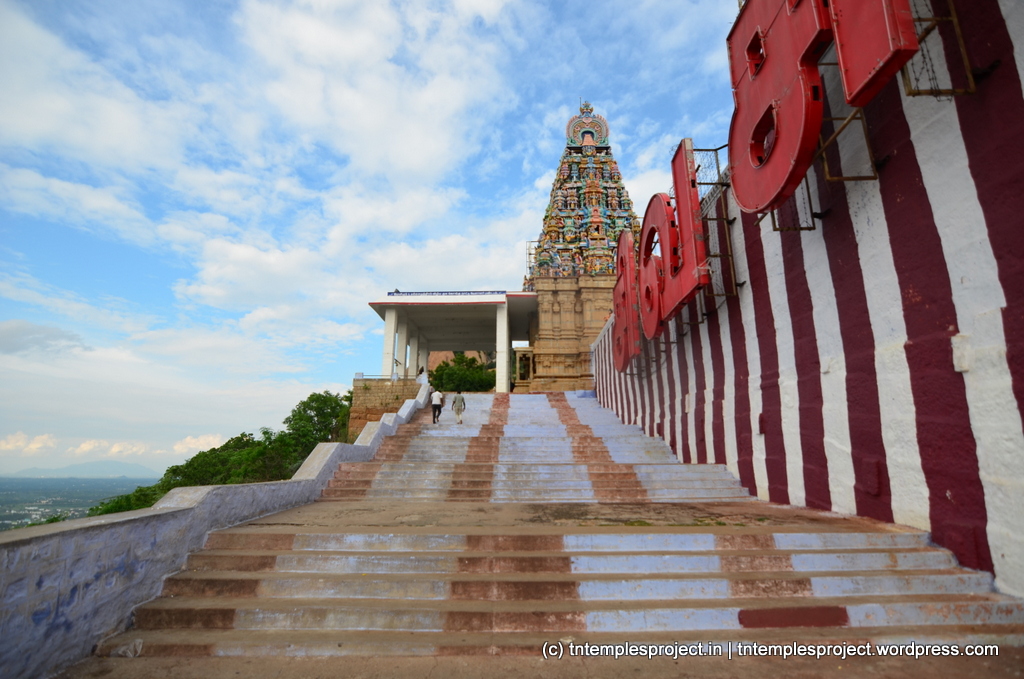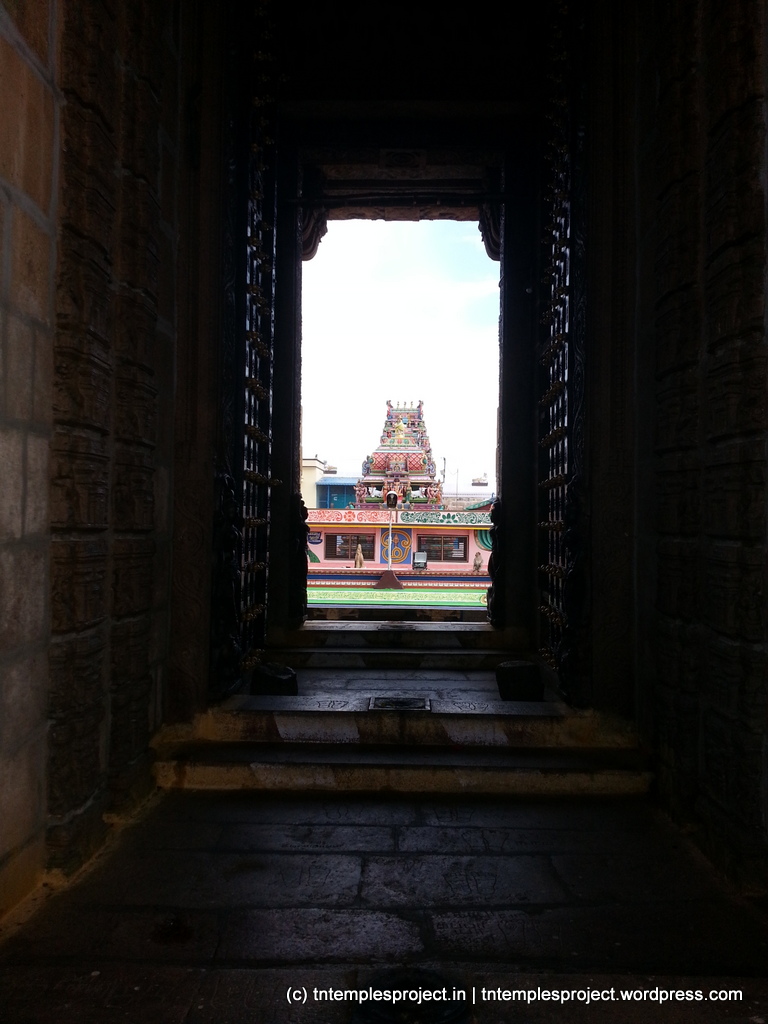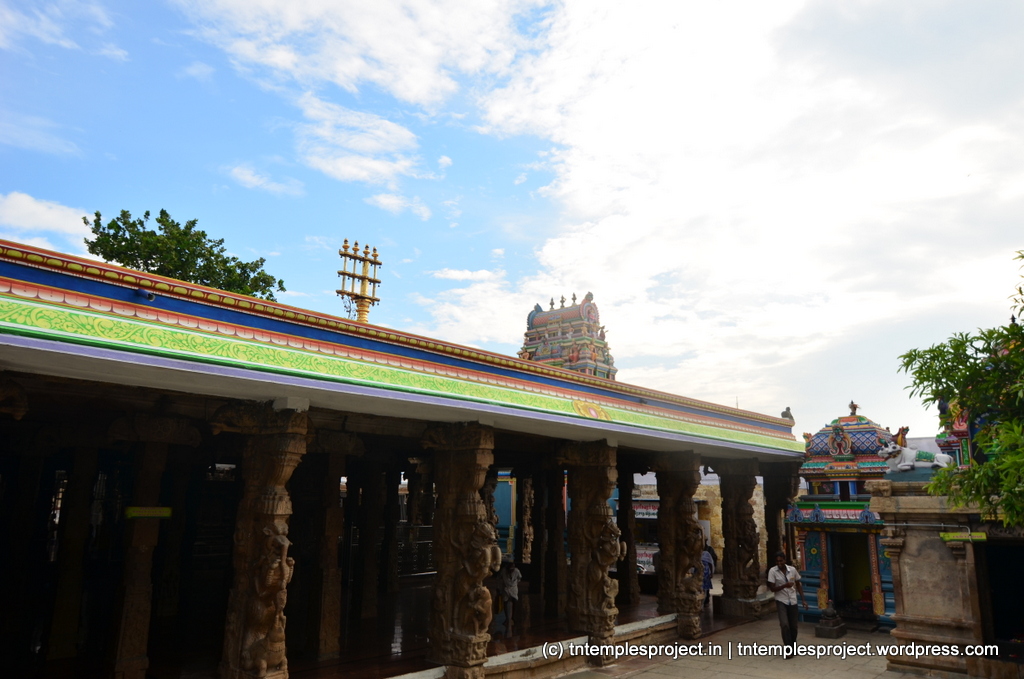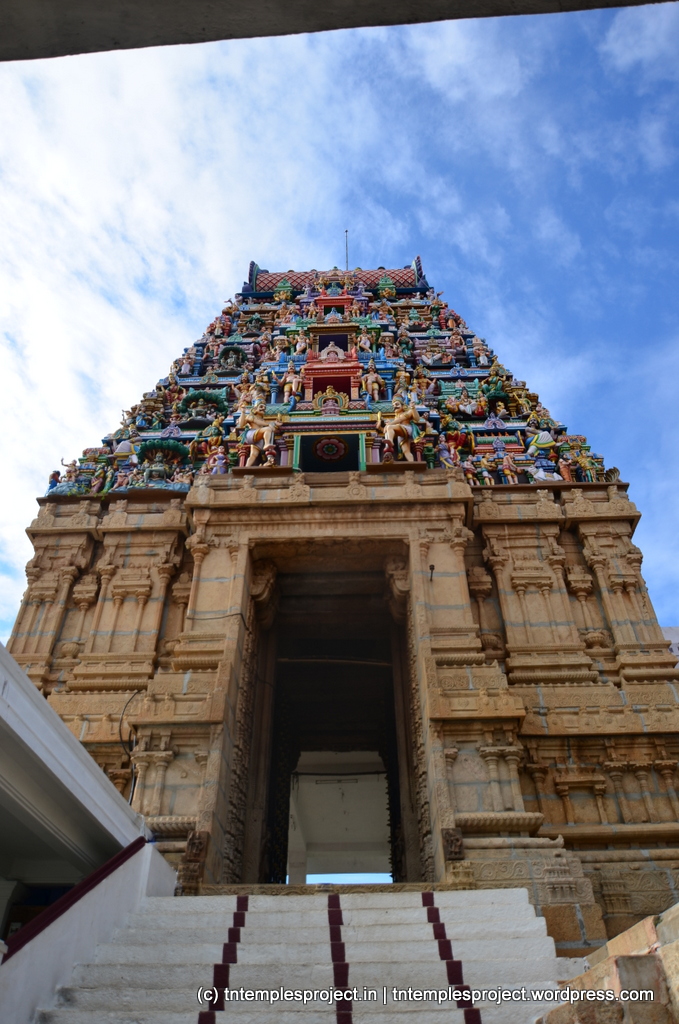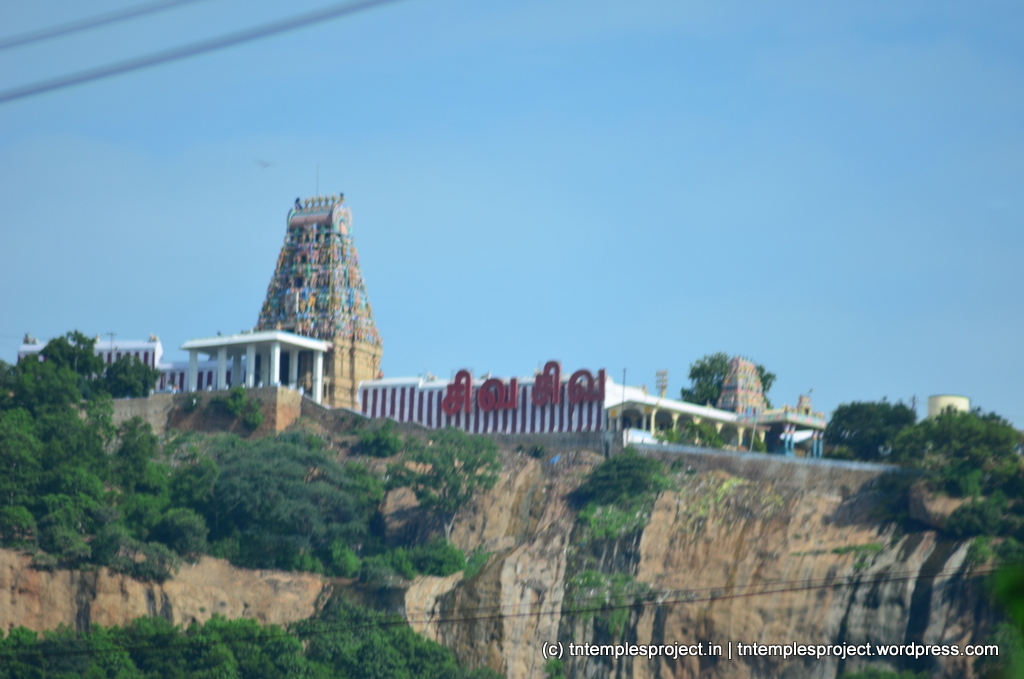Basic information about the temple
| Moolavar: | Ardhanareeswarar | Ambal / Thayar: | BaagampiriyaaL |
| Deity: | Siva | Historical name: | Tiruchkodimada Sengundur |
| Vriksham: | Iluppai | Teertham: | Deva Teertham |
| Agamam: | Age (years): | Timing: | to & to | Parikaram: |
| Temple group: | Paadal Petra Sthalam (Kongu Nadu) | – | |
| Sung by: | Temple set: | ||
| Navagraham: | Nakshatram: | ||
| City / town: | Tiruchengode | District: | Namakkal |
| Maps from (click): | Current location | Erode (24 km) | Namakkal (43 km) |
| Salem (50 km) | Karur (62 km) |
Location
Tiruchengode is located 25km from Erode and 38km from Namakkal.
Sthala puranam and temple information
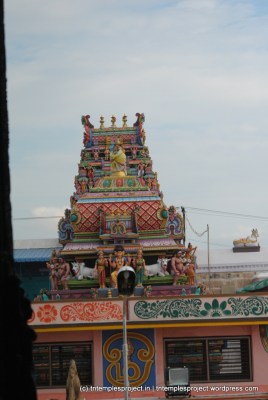
This temple has a lot of puranams and information, so I have written about as many of these as I can, in sections.
Sage Bringhi was an ardent devotee of Lord Siva and worshipped Siva to the exception of all other gods, which upset Parvati. Livid, she drained all the blood and removed the flesh (considered the feminime aspect of the human body) from his body leaving Bringhi reduced to just bones. Even so, Bringhi refused to acknowledge her, and continued to worship only Lord Siva. Seeing this, Parvati prayed to Lord Siva and became a half of him, effectively creating Ardhanariswarar (half-Parvati, half-Siva). It still did not dawn upon Bringhi that the Lord and the Mother are inseparable. So, he took the form of a bee and tried to do pradakshinam only to Siva, by boring a hole through the middle. This infuriated the Goddess so much that she cursed the sage to remain a bee forever. Realizing his folly the sage pleaded for mercy, and the kind Mother Parvati blessed him, advising him that she and the Lord were inseparable. She also advised him to pray to both of them to obtain salvation. Parvati here is called Bagampiriyal (the one who is not separated from the Lord). Ardhanari is one of the 64 forms of Siva.
The murti of Ardhanareeswarar is said to be made of herbs and a white elixir, which has healing properties. During the daily abhishekam, the principal deity is dressed in a sari on one side and a veshti (dhoti) on the other – decorated as two halves of male and female.
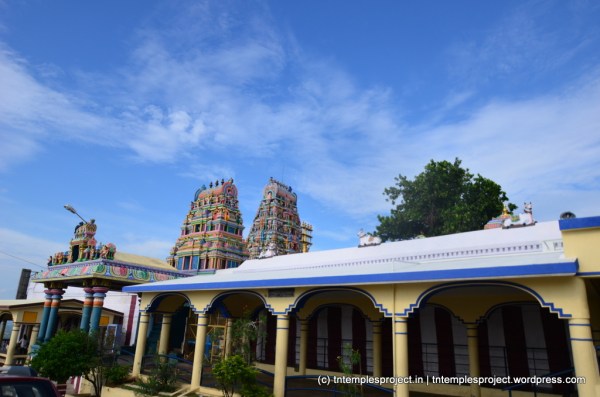
After Murugan left Kailasam, Parvati felt distraught, and so Siva brought her to a beautiful garden to cheer her up. There was a jasmine plant in the garden, that had would itself around a tree trunk. When Siva pointed this out to Parvati, she blushed, and covered Siva’s eyes with her hands. The whole world went dark, and all sense of order was lost. In order to avoid such instances in future, Parvati suggested to the Lord that they merge into one. Siva accepted the suggestion, but instructed her to perform penance at various places, finally reaching Tiruvannamalai. There, Siva appeared to her again to say that Murugan was at Senkundru, and so they came here to see their son.
During the battle of might between Vayu and Adiseshan over mount Meru, a piece of the mountain fell here, along with a bit of Adiseshan’s blood. The resulting hill was red in colour, and got the name Chen-Kundru, which over time has become Chengode.
In the Narasimhavataram, after the slaying of Hiranyakashipu, Narasimhar is said to have come to Senkundru and bathed in the temple tank here, to quell his ferocity.
A unique custom at this temple is the offering of Teertham as prasadam to devotees – typically, this is the practice in Perumal temples. The main rajagopuram of the temple faces north, moolavar faces west, and Perumal faces east.
In a departure from typical iconography, Dakshinamurti at this temple has his right leg lifted up and left foot on Apasmara purushan, instead of the reverse.
During their 13-year exile, the Pandavas are said to have worshipped at this temple. There is a place called Pancha Pandava Padukkai on the hill, as a mark of their visit.
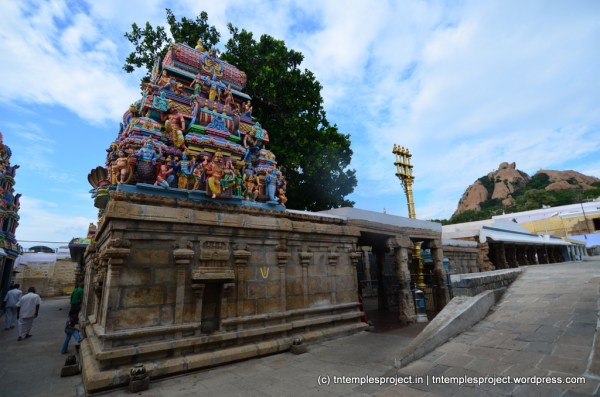
Adikesava Perumal
As advised by Adikesava Perumal (who has a separate shrine here), Parvati performed the Kedara Gowri vratam, to become fused with Lord Siva. A sage used to visit Tirupati on foot every month, but could not do so in his old age. Perumal gave him darsanam here near the tulasi on the hill.
Murugan
Arunagirinthar has sung about Murugan here, in the Tiruppugazh. This is one of the places that Murugan is said to have come to, after the spat with his brother Vinayakar over the mango handed out by Siva. The murti of Murugan here is said to contain herbs. Also, his vel (spear) is taller than Murugan himself, which is rare, if not unique.
Structural temple, art, architecture and literature
This is a Chola temple at its core, with subsequent additions made during the Pandya, Vijayanagara and Nayak periods, as well as one British officer during the colonial times. The temple finds mention in the Silappatikaram from Sangam literature, and is referred to as Neduvelkundru. The earliest inscriptions and literary mentions refer to Parakesari Varman of Madurai who worshipped here.
Other information for your visit
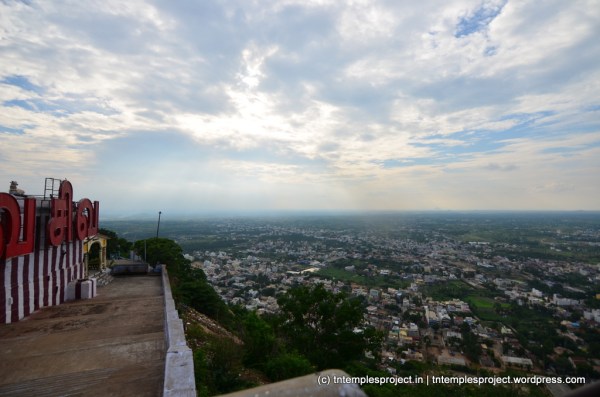
The temple offers some great views of the town below.
At the base of the hill is a shine for Kailasanathar. The 650-foot high hill is also called Nagagiri. There is a huge 60-foot long snake carved on the hill.
A further 450 feet up is the Uchchi Pillaiyar temple along with a shrine for Pandeeswarar – Siva in Lingam form. There is also a shrine for Murugan as Sengottu Velavar.
Performing Girivalam (walking around the hill, for which there is a separate path) is considered even more special, since the hill has Vishnu and Siva, and so it is considered the equivalent of having visited Vaikuntam and Kailasam. The Girivalam covers about 7km and can be completed in 1.5-2 hours.
It is possible to drive up the hill to the temple, or one can choose to climb the roughly 1200 steps up the hill. To reach the Uchchi Pillaiyar and Pandeeswarar temples, vehicles can go up to a point.
Contact
Gallery


